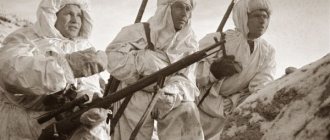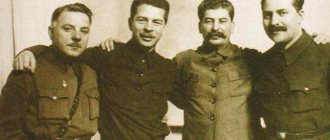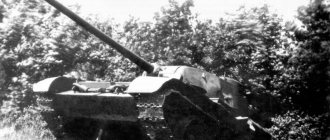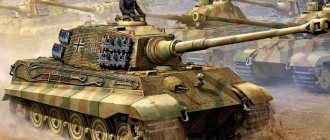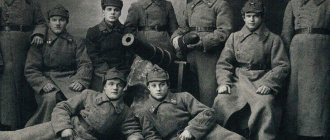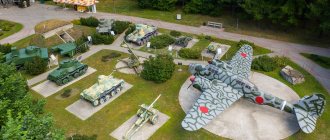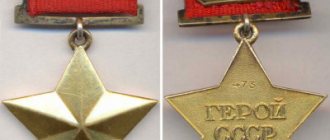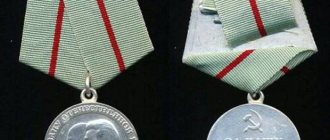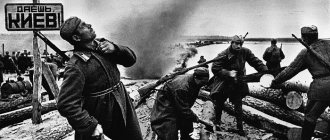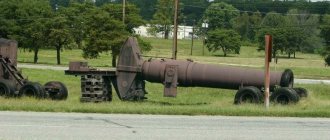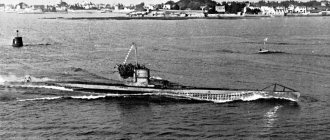1936 • SOVIET ACES • 1953
| Zh-Z U-F-H C-H Sh-Shch E-Y-Y |
Safonov Boris Feoktistovich
| 25 wins (20 + 5) |
Born on August 26, 1915 in the village of Sinyavino (now Plavsky district of the Tula region). He graduated from 7 classes and a secondary school in the city of Tula. In 1931 he began training at the flying club. Since 1933 in the ranks of the Red Army. In 1934 he graduated from the 1st Military Aviation Pilot School named after A.F. Myasnikov in Kach, served in the 106th Aviation Squadron of the 40th Aviation Brigade of the Air Force of the Belarusian Military District. He was an ordinary pilot, an instructor in the parachute service, and later an assistant to the squadron military commissar for Komsomol work. Since 1940, he served in the Northern Fleet Air Force as a flight commander of the 15th Aviation Regiment.
Participant of the Great Patriotic War from June 22, 1941 (squadron commander, senior lieutenant) as part of the 72nd mixed aviation regiment of the Northern Fleet Air Force, flew I-16. In October 1941, he was appointed commander of the newly formed 78th Fighter Regiment within the Air Force fleet, flying English Hurricane fighters. Since March 1942 - commander of the 2nd Guards SAPS of the Northern Fleet Air Force (01/18/1942 transformed from the 72nd SAP). He flew the Hurricane and the American-made Kittyhawk fighter (Curtiss P-40 Kittyhawk).
By August 28, 1941, Captain B.F. Safonov had completed 130 combat missions, conducted 32 air battles, in which he personally shot down 11 enemy aircraft. On September 16, 1941, for the courage and bravery shown in battles with enemies, by Decree of the Presidium of the USSR Armed Forces, he was awarded the title of Hero of the Soviet Union with the Order of Lenin and the Gold Star medal (No. 533).
On May 30, 1942, the commander of the 2nd Guards Mixed Aviation Regiment of the Air Force of the Northern Fleet of the Guard, Lieutenant Colonel B.F. Safonov flew in a group of 3 Kittyhawks of his regiment to cover the transports of the allied convoy PQ-16 in the Barents Sea (initially pilots 2- The first GSAP took off in four, but Safonov's wingman of the Guard, Captain A. N. Kukharenko, returned from the route to his airfield due to a malfunction of the aircraft and the commander decided to continue the mission without a partner). Over the guarded ships, Soviet pilots entered into an air battle with a group of German Ju-88 bombers, during which Safonov went missing (presumably his Kittyhawk’s engine failed due to combat damage or a technical malfunction, and the vehicle and the pilot fell into the sea).
In total, he made 234 combat missions, in air battles he personally shot down 20 and 5 enemy aircraft as part of a group. On June 14, 1942 he was awarded the title of twice Hero of the Soviet Union.
Awarded the Order of Lenin (09/16/1941), three Orders of the Red Banner (07/14/1941, 12/22/1942, 01/22/1942), the British Order of the DFC (03/19/1942).
* * * List of famous aerial victories of B. F. Safonov:
| Date | Enemy | Place of plane crash or air battle | Your own plane |
| 24.06.1941 | 1 Xe-111 | Bolshaya Volokovaya Bay | I-16 |
| 27.06.1941 | 1 Khsh-126 (in group 1/3) | north of the village of Titovka | |
| 16.07.1941 | 1 Khsh-126 | Hurray-lip | |
| 17.07.1941 | 1 Yu-87 | west of the village of Murmashi | |
| 18.07.1941 | 1 Yu-88 | east of Vaenga airfield | |
| 25.07.1941 | 1 Yu-88 | Tsyp-Navolok | |
| 05.08.1941 | 1 Me-109 | Vaenga airfield | |
| 06.08.1941 | 1 Yu-88 | Maly Oleniy Islands - Teriberkoy | |
| 09.08.1941 | 1 Yu-88 | southeast of Lake Kyadel-Yavr | |
| 23.08.1941 | 1 Yu-88 | Lake Kuyrk-Yavr | |
| 26.08.1941 | 3 Yu-88 (in group 3/9) | Vaenga - Luostari | |
| 27.08.1941 | 1 Khsh-126 | Hurray-lip | |
| 02.09.1941 | 1 Me-109 (in group 1/6) | Murmansk | |
| 09.09.1941 | 1 Yu-87 | west of Lake Ura-Gubskoe | |
| 15.09.1941 | 1 Me-110 | Western Faces | |
| 1 Khsh-126 | Lake Kuyrk-Yavr | ||
| 1 Yu-87 | |||
| 17.12.1941 | 1 Me-109 | south of Lopatkina Bay | "Hurricane" |
| 31.12.1941 | 1 Xe-111 | northwest of Kildin Island | |
| 17.05.1942 | 1 Yu-88 | Murmansk | "Kittyhawk" |
| 30.05.1942 | 3 Yu-88 * | Convoy PQ-16 | |
| Total aircraft shot down - 20 + 5; combat sorties - 234. | |||
*
There is no documentary evidence; they were counted as shot down only on the basis of radio communications during the battle. From photographic materials from different years:
From wartime press materials:
Biography
Tula province, the village of Sinyavino is the place where Boris Safonov was born on August 26, 1915. The father and mother of the future hero were simple peasants.
After graduating with honors from a seven-year school, Boris entered the FZU (factory apprenticeship school). This educational institution trained specialists who knew the locomotive business. At this school, the guy joined the ranks of the Komsomol.
Boris Safonov, whose biography was considered common among his peers, most likely would have become a railway worker. However, the Leninist Komsomol, of which he was a member, announced its patronage over aviation. And then thousands of boys and girls rushed into the sky. Among them was Boris Feoktistovich Safonov. He became a member of a circle organized at the Osoviakhim school, which later became the Tula Aero Club. It was here that the future military pilot Safonov acquired qualities very necessary for a pilot. This is self-confidence and independence, discipline and endurance.
Then the young guy successfully passed the medical examination and became a student pilot at the Tula flying club. He studied the theory of ground training a lot and diligently. Even before going to bed, already lying in bed, Boris mentally went through in his memory all the details of the instrument panel, which is located on the plane in front of the pilot. This is how he consolidated his knowledge acquired during classes. Then there were independent flights, during which Safonov showed his extraordinary talent.
The Tula province, the place where the future order bearer was born, grew up and studied, was abandoned by him in August 1933. This happened after the guy successfully graduated from the flying club, when Boris, in the direction of his command, ended up in Kacha. Military pilots were trained here.
Family life
In Belarus, Boris Safonov met his future wife Evgenia .
With his wife Evgeniy
On October 28, 1937, their son Igor . Little is known about family life, which is not surprising. They didn't live together for long. From 1940 to 1941 the family lived in Severomorsk. Then the war came. Boris's family was evacuated to Tula, Kuibyshev, and Galich. Judging by the letters, Boris’s son Igor left with his grandparents, and his wife Evgenia worked as a dentist in Severomorsk. She didn’t go into evacuation.
The son of Boris Safonov did not disgrace his father’s honor. He devoted his life to military affairs, graduating from the Leningrad Higher Engineering and Technical School of the Navy. Served in the Arctic. Worked in the Northern Fleet Capital Directorate. Then he was a leading engineer at Voenmorproekt. Now he is an assistant to a deputy of the Murmansk Regional Duma.
Last Stand
Heading the 2nd Guards Aviation Regiment, Guard Lieutenant Colonel Safonov devoted a lot of time and effort to leadership. In this regard, he began to fly less, but in almost every battle he added to the list of his victories.
In 1942, his regiment was given a new task. In addition to defending the port of Murmansk, the pilots had to guard allied military convoys located on the territory of the Northern Fleet. While performing this task, the famous Soviet pilot died. He made his last combat mission on May 30, 1942, taking off to cover an Allied convoy en route to Murmansk.
Safonov was the leader of the four Soviet cars. However, one of them returned back due to engine problems. Three Soviet pilots got involved in a battle with six enemy bombers, launching a rapid attack on the enemy. In the confusion that arose during the fight, the link disintegrated. Boris Safonov was not seen again.
The place where the brave pilot died in the Barents Sea can be found on the map. It is 69 degrees 51 seconds north latitude and 64 degrees 42 seconds east longitude. He died in an unequal battle with the Nazis, having shot down two planes. The Air Force lost a naval aviation ace, who in May 1942 was credited with shooting down 25 enemy aircraft.
What is the cause of the death of Boris Safonov? There is still no answer to this question. According to one version, he was unable to cope with the sudden attack of one of the Junkers, and according to another, he fell due to engine failure. The latter of these two assumptions is considered the most likely.
New appointments
On October 24, 1941, Safonov received an offer to gather the best pilots into the 78th Fighter Aviation Regiment and lead it. Boris Feoktistovich accepted the new appointment. The armament of the new air regiment consisted of twenty-seven Hurricanes - machines that were handed over to the Soviet Air Force by British pilots. The equipment was not new and most of it required repair. In addition, it was decided to rearm the British aircraft. On Safonov’s initiative, they were equipped with four heavy machine guns, two of which were soon replaced with cannons. Somewhat later, guide equipment for rockets was installed under the planes of the vehicles.
As commander of the 78th Aviation Regiment, Boris Safonov showed remarkable organizational skills, as well as the ability to educate and train subordinates. For these merits he was awarded the next rank - major.
Boris Safonov continued to fly combat missions, increasing the number of enemy vehicles he shot down. On December 22, 1941, he was awarded the second Order of the Red Banner, and on January 22, 1942, the third.
Safonov served as commander of the 78th Aviation Regiment for a short period. On March 20, 1942, he was put in charge of the 2nd Guards. In this air regiment, the brave pilot began the war. Safonov continued to add to the list of his military victories. During this period, two more awards appeared on his jacket. This is the Gold Star of the Hero and the British award - the Order of DFC.
Personal duel
In the same autumn days of 1941, the famous German ace was destroyed by Safonov. “Messer” is a pilot, on the fuselage of which a red dog was depicted holding a red star fighter in his teeth, and was often seen during attacks on the air regiment. The enemy behaved brazenly, but avoided open battle. Safonov dreamed of meeting a fascist, and one day such an opportunity presented itself to him. The Soviet pilot boldly imposed battle on the enemy, who skillfully chose positions advantageous to him by performing complex aerobatic maneuvers. However, after a couple of minutes, Safonov brought his “Yastrebok” into the tail of the “Messera” and, after a short pursuit, fired several well-aimed bursts. The enemy's car caught fire and fell down like a stone. The German pilot left the burning car and landed by parachute directly at the position of our anti-aircraft gunners. The enemy captured by Soviet soldiers turned out to be none other than the famous Willie Frenger. This seasoned German ace had nine hundred combat missions and thirty-six aircraft shot down over the English Channel, for which the military command awarded him two Iron Crosses.
Studying at the Kachin school
While at this educational institution, Boris Safonov carefully studied the works of the classics of Marxism-Leninism. This became the initial stage of preparation for joining the Communist Party.
While studying at the Kachin school, at the age of nineteen, Safonov became a fighter pilot. At the same time, he demonstrates excellent skills in aerial shooting, piloting technique and knowledge of materiel, earning the highest marks in all these disciplines. In the characteristics written by instructors during these years, it is noted that Safonov is distinguished by his quick reaction, quick-witted and resourceful in the air, in addition, his rather high degree of initiative is noted.
Work as an instructor
In the North, Boris became interested in the history of naval aviation, which determined his subsequent life path. In addition, Safonov’s flying skills, talent as an organizer and ability to teach did not go unnoticed. The senior lieutenant was appointed to the position of commander of the training squadron. An excellent naval fighter pilot, Safonov became a strict and patient teacher. He prepared the newcomers for all the surprises they would encounter in a real battle.
Belarusian Military District
In December 1934, Boris Safonov was sent to his further place of service. It became the Belarusian Military District, and more specifically its 40th Aviation Brigade. At this time, new aircraft were adopted by the Soviet Air Force. They were I-15 and I-16, as well as I-153. Boris enthusiastically studied new machines, spending hours in the library. Already at the beginning of the summer of 1936, the aircraft that appeared in service with the Soviet Army were well studied by Safonov. The fighter pilot even developed his own method of combat, which subsequently proved to be excellent during the war.
In 1937, Boris Feoktistovich Safonov was accepted as a candidate member of the Communist Party. At the same time, he also became secretary of the Komsomol organization.
In 1938, the fifteenth aviation regiment was formed. Boris Safonov became its assistant commander for Komsomol work.
In December 1939, the first report on the hostilities that began on the border of the Soviet Union with Finland was heard on the radio. Military pilot Safonov immediately submitted a report in which he outlined his desire to enlist in a fighter squadron heading to the North. Boris Feoktistovich's request was granted.
First victories
Just two days after the start of the war with the Nazis, Safonov took off in his I-16 with the aim of intercepting a German reconnaissance Ju-87. After a long chase, the enemy plane was attacked. First, Safonov killed the shooter and damaged the car. After this, the Soviet pilot, using a long burst, cut off the tail of the plane. The enemy vehicle fell into Zelentsy Bay, where its wreckage was picked up by an approaching boat. This plane was the first to be shot down in the skies of the North.
The second victory was won by Safonov on June 27, 1941. The German aircraft HS-126, which he and his comrades shot down together with his comrades, which Soviet infantrymen later nicknamed “Crutch,” fell to the ground.
In the days when the war began, stubborn air battles took place over the Kola land. The Germans sought to use the time of the polar day, when the sun stood above the horizon throughout the day. Enemy planes, grouped in large formations, attacked the ships of the Soviet fleet. The number of our fighters was small, and therefore naval pilots had to make 6-7 combat sorties a day. With each meeting with an enemy aircraft, Boris Safonov improved his tactical techniques, conducting close combat. At the same time, he studied all the capabilities of the German vehicles that fought over our Northern lands.
Safonov's list of aerial victories expanded significantly over the next two months. It was at this time that the Germans launched massive raids on the port of Murmansk and northern Soviet airfields.
So, on July 7, the “nine” I-16, led by Safonov, covered the Polyarnoye naval base. At this time, a group of German Ju-87 aircraft appeared in the sky above the territory they protected, escorting enemy Me-109 fighters. An air battle ensued. German planes were attacked by Soviet pilots, who shot down seven enemy aircraft. Our “nine” returned to base in full force.
N.G. Golodnikov about B.F. Safonov
Interview with Andrey Sukhorukov
——What was your first impression of B.F. Safonov? What can you say about him as a fighter pilot and a person?
— My first impression of Safonov is that he is a very charming person. He knew how to win people over, he was a good psychologist. A very good analyst. I analyzed every event, every fight. After every fight, no matter how difficult it was, Safonov always gathered everyone and analyzed everyone’s actions, no matter what they were. It used to be that someone would bring a dozen holes, he would lead everyone to this plane and figure out how you got these “holes.” “These,” he says, “you received when you didn’t see that they were shooting at you, and these — when you did such and such. But it should have been this and that, then there wouldn’t have been any holes.” Safonov “saw” great! He had such talent. He knew how to take responsibility. We were the first to fly as a “pair”. I always thought about improving technical capabilities, it was thanks to him that RSs were installed on the I-16. It was also his idea to put RSs, guns and Berezinas on Hurricanes. And when the British made a noise at him: “Like, how... without our consent... new weapons...” He just said: “Nonsense. The war will write everything off. Let's take my responsibility."
He also had one more important quality - he was almost a teetotaler. I've never seen him drink vodka. In the evenings, when we were getting ready, he would drink 25–50 grams of red wine, and that’s all.
Didn't smoke. Very competent. Well-read. Cultural. He knew how to speak - beautifully, accurately, concisely. He could also swear, you know, people here often don’t understand normal words, but he always swears according to the case and the situation. Well, in a fight, of course, there is more swearing than words.
And to just scold someone like that has never happened.
Safonov considered the most important thing for a fighter pilot to be able to shoot. Moreover, shoot “in the Safonov style” - probably “at the rivets.” Secondly, maneuver. Be able to get close and get into shooting range for sure. Thirdly - “look!” Discretion is the basis of everything. He saw it - he maneuvered, got close - opened fire - shot it down! This was his formula.
As for his personal account, I think he shot down more than 22 German aircraft. Safonov was a superb shooter and sometimes shot down two or three German planes in one battle. But Safonov had a rule - “don’t give yourself more than one shot down in a battle.” He “gave away” everyone else to his followers. I remember one battle well, he shot down three German planes and then the order was that one for him, one for Semenenko (Peter Semenenko flew as Safonov’s wingman) and one for someone else. Petya gets up and says: “Comrade commander, I didn’t shoot. My percale isn’t even shot through.” And Safonov says to him: “You didn’t shoot, but I did, and you provided me with shooting!” And Safonov had such cases more than once.
Combat autumn
Military operations in the North reached their apogee in September 1941. This is the time when the Germans took decisive measures to break through the defenses of the Soviet troops. To do this, they transferred their aircraft to the North from all fronts. Enemy vehicles were constantly above our front lines, engaging in battles with Soviet fighters.
During the battles, Boris Safonov used both defensive techniques and aggressive methods that literally stunned the enemy. At times he imitated a stampede, and when the German pilot was already joyfully celebrating victory, he suddenly slowed down and remained in the tail of the discouraged enemy.
In any battle, Safonov was distinguished by mutual assistance and assistance. This was the main rule of the Soviet ace. Not sparing his life, the pilot hurried to the aid of his comrades. So, in one of the fights, junior lieutenant Maksimovich was attacked by a Ju-88 bomber. Carried away by the battle, he did not notice the Me-109 appearing behind him. Safonov immediately rushed to help his comrade, despite the fact that by that moment he had shot all the ammunition he had. The German pilot was frightened by the fierce attack and left the battle.
The courage and bravery of Boris Safonov were noted by the command. On September 16, 1941, the brave pilot was awarded the title of Hero of the Soviet Union. By the time this Decree was published, Safonov already had an impressive list of aerial victories.
Memory
The military merits of Boris Feoktistovich Safonov were expressed not only in the enemy aircraft he shot down. The Soviet commander made a great personal contribution to the development of Northern Fleet aviation. Under his leadership, dozens of pilots gained significant combat experience and subsequently received the title of Hero of the Soviet Union.
The name of the North Sea pilot is not forgotten today. A monument to Boris Safonov was erected in Severomorsk, Murmansk and Plavsk. There is a bust of the hero in the village of Fedotovo near Vologda in the military garrison located there.
The village of Safonovo in the Murmansk region is named after the brave pilot. In this locality, the Northern Fleet Air Force Museum has been opened, in front of which is the Alley of Heroes. There are busts of fifty-three North Sea pilots who were awarded the title of Hero of the Soviet Union, including a bust of B.F. Safonov.
Assignment of the next title
Already on July 10, 1941, Boris Safonov became captain. In addition to being awarded the next rank, the brave pilot was appointed commander of an aviation squadron of fighters. The fighter was also given a new I-16 type 17 vehicle, which had serial number 28213-95. On its fuselage Safonov wrote “Death to fascism!”
Boris Feoktistovich meticulously prepared for every air battle. He personally monitored the condition of his aircraft, each time being present when loading ammunition, and also checking the shells with which the tape was filled. On the I-16 issued to him, Safonov made 109 missions, during which he shot down 17 enemy fighters and bombers. During the entire period of hostilities, new engines were installed on his car three times. Today this aircraft is one of the exhibits of the Leningrad Naval Museum.
On July 14, 1941, Safonov was awarded the Order of the Red Banner. The air battle carried out that day added two downed enemy bombers to his list of victories. On July 27, he destroyed two more German dive bombers, and on August 8, a Me-109 fighter. By the end of the first military summer, there were ten enemy vehicles on the list of those personally shot down by Safonov’s plane.
